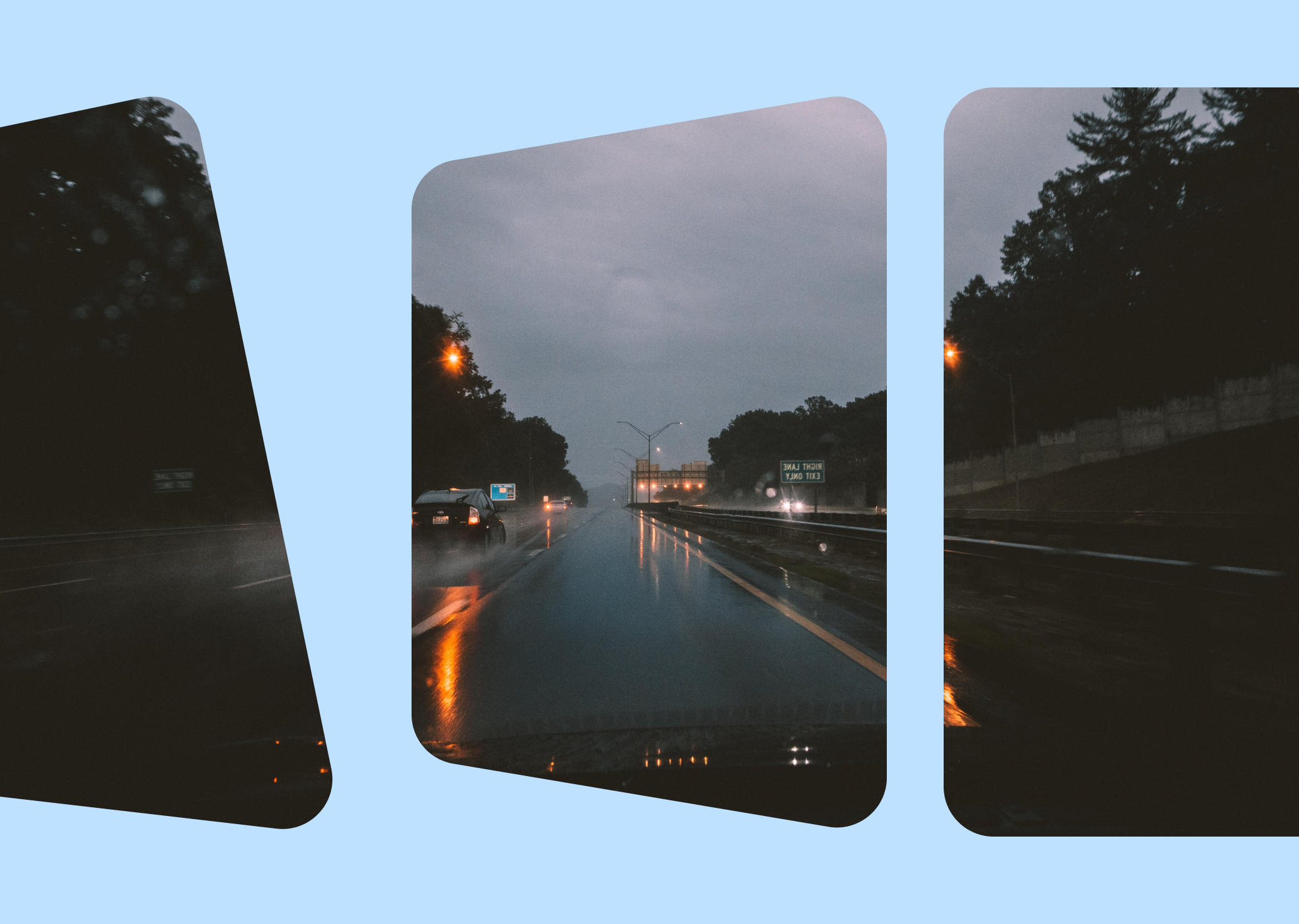- Carmoola
- Blog
- Tips and Advice
- Winter Driving Tips: Wet Weather Conditions
- 🗞 Tips and Advice
- Last updated: Dec 2, 2021
- 5 Min Read
Winter Driving Tips: Wet Weather Conditions
Written by

Verified by


See how much you can borrow in 60 seconds
| Representative Example | |
|---|---|
| Loan amount | £10,000 |
| Interest rate | 13.9% APR |
| 54 payments of | £246 |
| Total cost of credit | £3,284 |
| Option to purchase fee | £1 |
| Total payable | £13,285 |
Most drivers find it challenging to drive while it’s raining hard. Even after the rain, it can still be difficult to drive on wet or even flooded roads.
Driving in heavy rain presents many challenges. Visibility is reduced, the road is slippery, and your car might even have problems once the water starts leaking in.
To help you drive in wet weather conditions during the winter months, here are some tips you can use.
Take Your Time and Drive Slowly
It’s a simple and obvious tip, but you’ll be surprised how common it is for most drivers to underestimate the importance of setting aside enough time for their journey.
When you’re late for an appointment, you try to get there on time by driving faster than usual. If you do this in wet weather conditions, you’re putting yourself and other road users at risk.
Maintain twice the required distance between you and the vehicle in front of you. This will give you enough time and distance to respond and avoid a collision.
By driving slowly, you also won’t need so much space to brake in case you need to stop suddenly. During wet conditions, roads may also ice over, affecting your car’s grip.
Whenever you take corners, be extra slow and remember not to accelerate away from them too fast or else your car could spin out of control.
Checking the tyres
If you must travel in heavy rain, check your tyres first before you go. This tip is applicable in any weather condition to ensure safe driving.
Tyre Tread Depth
The tyre tread should be above the legal limit. A good tread depth will allow your car to perform well as you’re travelling in heavy rain.
Make it a habit to examine the tread depth so you remain safe and abide by the legal requirements.
If you see that the tread depth of your tyres is already 1.6mm or below, it’s time to change tyres. It would be best to replace them before you reach 1.6mm, though.
Take your car to your preferred garage so that the auto mechanic can do the work correctly.
Tyre Pressure
Tyre pressure is also important, of course. Check it at least once a week so you’ll know if you need to top up.
When tyres don’t have the right pressure, you might experience grip loss, especially when driving in heavy rain.
You’ll have a hard time controlling your vehicle if this happens. Skidding and even aquaplaning may also happen. So, check the tyre pressure regularly.
Be Aware of Aquaplaning
Aquaplaning can happen as you’re driving fast on the motorway during wet weather conditions. It happens when a layer of water builds between the road surface and the tyres, reducing grip altogether.
Your car could spin out of control if this happens. Whenever you feel that the steering wheel is going soft or your vehicle is no longer moving in other directions except forward, then your car is aquaplaning.
If you do experience aquaplaning, here’s what you can do. Don’t panic, of course, and don’t step on the brakes all of a sudden because your car will spin and slide all the more.
When reducing acceleration, do it gradually and in a controlled manner. If your vehicle starts to spin, you can counteract this by turning the wheel in the opposite direction.
Examine the Wiper Blades
The wiper blades may seem insignificant, but they’re very important, especially in rainy weather.
Have you changed them in the past year? If not, checking them would be a good idea before you go on a drive in heavy rain.
Examine the wiper blades for any damage. If there are any, get them replaced before you travel so you won’t have any problem seeing the road and other vehicles during a rainy drive.
Replacing wiper blades won’t cost you so much. You can even replace them yourself. But if you’re not sure how to do it, you can go to your local garage and let a professional do it.
Wet roads can also make your windscreen really dirty, and this might obscure your vision. Check your washer fluid as well, and top it up if it’s already running on empty.
Get Hydrophobic Treatment for Your Windscreen
If you have an extra budget for your car, it might be a wise idea to get hydrophobic treatment for your windscreen.
This ensures that your windscreen will remain clear, even when it’s raining hard as you’re travelling.
Since the windscreen has a hydrophobic layer, wet grime and water won’t stick to the glass. You won’t have problems not seeing the road and other road users clearly during heavy rain.
Takeaway
Driving in wet weather conditions can be dangerous. The roads are slippery, and they could get flooded.
Your car may suffer from engine failure if water seeps in. You might get stuck on your way to your destination if your car stops running because of mechanical problems.
That’s why if you can reschedule your appointments when it’s raining heavily, do so rather than driving in harsh weather and putting yourself at risk.
But if you really have to go, you may want to have a weather forecast app on your phone to keep you updated.
Be sure to check your car first before travelling, and drive carefully! 👍
See how much you can borrow in 60 seconds
| Representative Example | |
|---|---|
| Loan amount | £10,000 |
| Interest rate | 13.9% APR |
| 54 payments of | £246 |
| Total cost of credit | £3,284 |
| Option to purchase fee | £1 |
| Total payable | £13,285 |
Related articles
What Are the Top 5 Used Car Websites in the UK?
Thanks to the internet, searching for a used car in the UK is easier than ever before. You can simply head online, visit a used...
What Is GMFV in PCP Car Finance? Guaranteed Minimum Future Value Explained
GMFV, or Guaranteed Minimum Future Value, is the amount your lender estimates your car will be worth at the end of your PCP...
Does Financing a Car Build Your Credit?
Financing a car can build credit when you make payments on time, but it can damage your score if you miss payments or take on...

.webp?width=832&height=592&name=customer-support%20(1).webp)










.webp?width=400&height=285&name=online-shoppers-with-dog%20(1).webp)


.jpg?width=500&height=356&name=Vintage%20car%20going%20to%20an%20old%20town-1%20(1).jpg)





